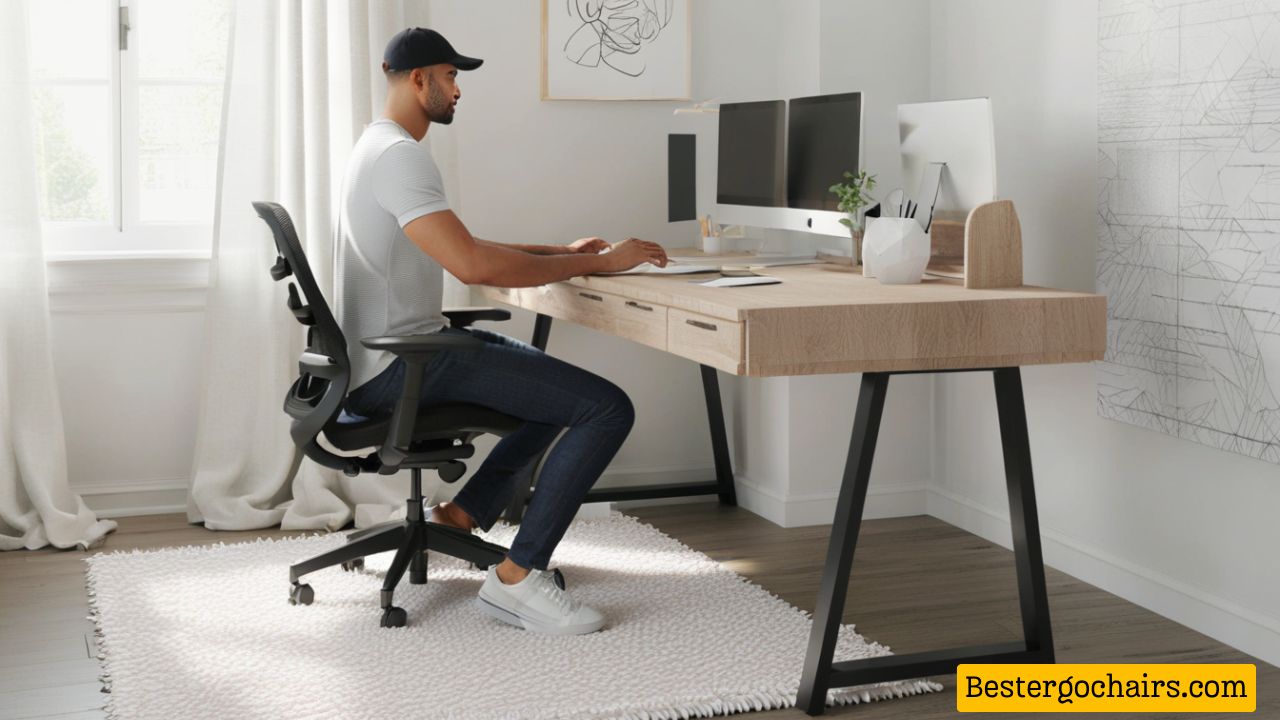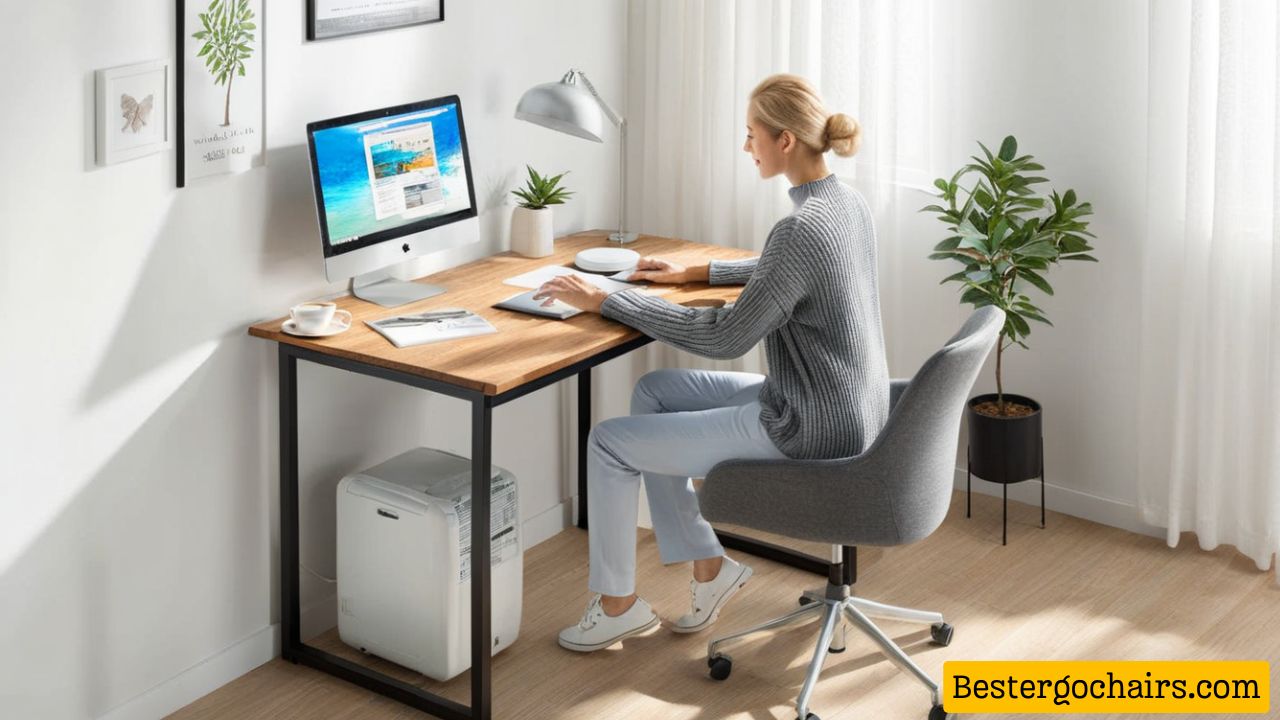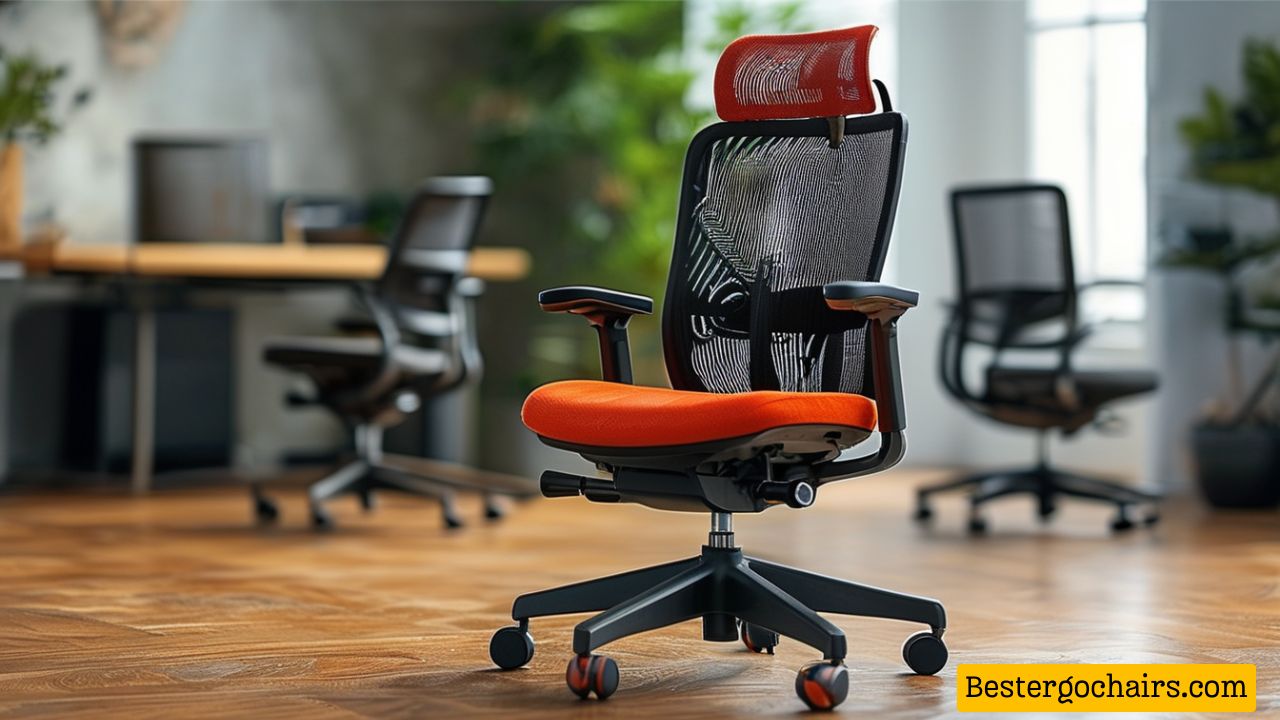We spend hours hunched over desks, staring at screens, and tapping away on keyboards. This daily routine can wreak havoc on our bodies, especially our spines. Back pain, neck strain, and poor posture are common complaints among office workers. However, there’s a simple solution: a good ergonomic office chair. An ergonomic chair isn’t just about comfort; it’s about supporting your body in a way that prevents pain and promotes healthy posture. Choosing the right chair and learning how to use it correctly can dramatically improve your well-being and boost productivity. This article will act as your complete guide to using an ergonomic office chair effectively, ensuring your spine remains happy and healthy.

Understanding the Benefits of Ergonomic Office Chairs
Before diving into the specifics of using a chair, it’s crucial to understand why an ergonomic chair is essential for your well-being. Here’s a breakdown of the key benefits:
Reduced Back Pain
One of the most significant advantages of ergonomic chairs is their ability to reduce back pain. Traditional chairs often lack adequate lumbar support, leading to slouching and pressure on the lower back. In contrast, ergonomic chairs are designed with adjustable lumbar support that conforms to the natural curve of your spine. This feature helps maintain proper spinal alignment, reducing the risk of developing chronic back pain.
Moreover, many ergonomic chairs come with additional features such as seat depth adjustment and backrest tilt, allowing you to customize the chair to fit your body perfectly. By providing optimal support, these chairs help alleviate discomfort and promote a healthier sitting posture.
Improved Posture
Proper posture is vital for overall health, especially for those who spend long hours sitting. Ergonomic chairs encourage users to sit upright, preventing slouching and maintaining a natural spinal curve. This not only feels better but also promotes better breathing and reduces the risk of neck pain.
When your spine is properly aligned, the muscles surrounding it can relax, reducing tension and fatigue. Additionally, good posture enhances your ability to focus and concentrate, leading to increased productivity throughout the workday.
Enhanced Comfort
Comfort is a critical factor when it comes to choosing an office chair. Ergonomic chairs are designed with various adjustable features, including seat height, backrest tilt, and armrests. These adjustments allow you to customize the chair to fit your unique body shape and size, ensuring maximum comfort during long hours of work.
A comfortable chair can make a significant difference in your overall work experience. When you’re comfortable, you’re less likely to shift around or fidget, which can lead to distractions and reduced efficiency. Investing in an ergonomic chair can enhance your comfort level and create a more enjoyable work environment.
Increased Productivity
When you’re comfortable and supported, you’re more focused and productive. Discomfort and pain can lead to distractions and reduced efficiency. Ergonomic chairs help eliminate these issues by providing the necessary support for your body, allowing you to concentrate on your tasks without being sidetracked by discomfort.
Furthermore, studies have shown that employees who use ergonomic chairs report higher levels of job satisfaction and engagement. A positive work environment fosters creativity and innovation, ultimately benefiting both employees and employers.
Reduced Fatigue
Sitting for extended periods can lead to muscle fatigue and stiffness. Ergonomic chairs are designed to promote good blood circulation and prevent muscle fatigue. By encouraging proper posture and providing adequate support, these chairs minimize the feeling of being stiff and sore after a long workday.
Additionally, many ergonomic chairs come with breathable materials that help regulate temperature and moisture, further enhancing comfort. By reducing fatigue, ergonomic chairs contribute to a more energized and productive workday.
Choosing the Right Ergonomic Chair for You
Investing in a good ergonomic chair is an investment in your health and well-being. While there are many options available, some key features to consider when choosing include:
Lumbar Support
One of the most critical features of an ergonomic chair is lumbar support. This should be adjustable to provide snug support to your lower back and prevent slouching. Look for chairs with built-in lumbar support that can be adjusted in height and depth to fit your body comfortably.
Additionally, some ergonomic chairs offer dynamic lumbar support that moves with you as you shift positions throughout the day. This feature ensures continuous support and helps maintain proper spinal alignment, reducing the risk of back pain.
Adjustable Seat Height
The chair should allow you to adjust the seat height so your feet are flat on the floor and your thighs are parallel to the floor. This position allows for optimal blood circulation and reduces the strain on your back and legs. A chair that is too high or too low can lead to discomfort and negatively impact your posture.
When testing a chair, ensure that your knees are at a 90-degree angle when seated. Your feet should rest flat on the ground or on a footrest if needed. This adjustment is crucial for maintaining proper posture and reducing the risk of developing musculoskeletal issues.
Adjustable Backrest
Look for a backrest that can tilt and recline, offering flexibility to customize your comfort level throughout the day. The backrest should support your back without feeling too tight or restrictive. Ideally, the backrest should allow you to lean back slightly while still maintaining proper spinal alignment.
Some ergonomic chairs also feature a locking mechanism that allows you to secure the backrest in your preferred position. This feature can be beneficial for individuals who prefer to change their seating position throughout the day.
Adjustable Armrests
Armrests play a crucial role in supporting your forearms and elbows comfortably. These should be height and width-adjustable to accommodate different body types and preferences. Properly adjusted armrests can help reduce shoulder strain and promote relaxation in your upper body.
When adjusting the armrests, ensure that your shoulders remain relaxed and your elbows are at a 90-degree angle. This position minimizes tension in your neck and shoulders, contributing to overall comfort during long hours of work.
Seat Depth and Width
The seat should be wide enough to allow you to sit comfortably without feeling cramped and deep enough to provide adequate leg support. A chair that is too narrow or shallow can lead to discomfort and restrict movement.
When testing a chair, sit back against the backrest and ensure there is a few inches of space between the back of your knees and the edge of the seat. This adjustment allows for proper circulation and prevents pressure points from forming during prolonged sitting.
Materials
Choose durable, breathable materials for the upholstery. Look for options that are easy to clean and maintain. Breathable fabrics help regulate temperature and moisture, enhancing comfort during long work hours.
Additionally, consider the cushioning of the seat and backrest. A chair with adequate padding can provide comfort without sacrificing support. Test different materials to find one that suits your preferences and needs.
Mastering the Art of Ergonomic Seating
Now that you have chosen your ergonomic chair, it’s time to learn how to use it correctly to maximize its benefits. Follow these steps for proper posture and comfort:
Adjust the Seat Height
Begin by adjusting the seat height so that your feet are flat on the floor and your thighs are parallel to the floor. This position allows for optimal blood circulation and reduces the strain on your back and legs. If your chair has a pneumatic lift, simply pull the lever while sitting to raise or lower the seat.
Once you’ve found the right height, ensure that your knees are at a 90-degree angle. If your feet dangle or your knees are elevated above your hips, make further adjustments until you achieve the desired position.
Utilize Lumbar Support
Adjust the lumbar support to provide a snug fit to your lower back. This ensures that your spine remains in its natural curve and prevents slouching and back discomfort. Many ergonomic chairs have adjustable lumbar support that can be moved up or down to suit your needs.
When seated, pay attention to how the lumbar support feels against your lower back. It should provide gentle pressure without causing discomfort. If necessary, make small adjustments until you find the perfect fit.
Adjust the Backrest
Recline the backrest to a comfortable angle. The angle should allow you to maintain a straight posture and minimize pressure on your spine. Aim for a slight recline that supports your back while allowing you to sit upright comfortably.
Experiment with different angles to find what works best for you. Some individuals prefer a more upright position, while others may benefit from a slight recline. The key is to find a balance that provides support without compromising your posture.
Engage the Armrests
Adjust the height, width, and angle of the armrests to ensure your forearms and elbows are comfortably supported. The armrests should be positioned so that your shoulders are relaxed and your elbows are at a 90-degree angle. This adjustment helps reduce tension in your neck and shoulders.
When using your keyboard and mouse, your arms should rest comfortably on the armrests without straining. If the armrests interfere with your ability to type or reach for your mouse, consider lowering them or removing them altogether.
Maintain Proper Posture
Sit upright with your shoulders relaxed and your back straight. Your head should be level, and your chin should be slightly tucked in. Avoid slouching or hunching over your desk. Make sure your hips are level with your knees.
To maintain proper posture, regularly check in with yourself throughout the day. If you notice yourself leaning forward or slumping, take a moment to readjust your position. Developing awareness of your posture is key to long-term success.
Take Regular Breaks
Even with the best ergonomic chair, it’s essential to take regular breaks to stretch and move around. Stand up, walk around, or do some light stretches every 30-60 minutes. This allows your body to recover from sitting and prevents stiffness and discomfort.
Incorporating movement into your day can significantly improve your overall well-being. Consider setting reminders to stand up and stretch or invest in a standing desk to alternate between sitting and standing throughout the day.
Consider a Footrest
If you find that your feet are dangling, adding a footrest can help elevate your feet and improve circulation. A footrest can also help distribute your weight more evenly and reduce pressure on your lower back.
When selecting a footrest, look for one that is adjustable in height and angle. This feature allows you to customize the footrest to suit your needs and preferences.
Experiment and Find Your Perfect Setup
Remember that everyone is different, so the perfect ergonomic chair setup will vary. Experiment with the different adjustments until you find a position that feels comfortable and supportive. Don’t hesitate to make changes as needed, especially if you notice discomfort or fatigue.
Taking the time to find your ideal setup can significantly enhance your comfort and productivity. Listen to your body and make adjustments as necessary to ensure you feel your best throughout the workday.
Beyond the Chair: Maintaining a Healthy Posture at Work
Using an ergonomic chair is a significant step toward a healthier work environment, but it’s not the only element. Maintaining these additional practices is crucial for optimal well-being:
Desk Ergonomics
Ensure your desk is at the correct height so you can work comfortably with your elbows at 90 degrees. If your desk is too high or too low, it can lead to strain on your wrists and shoulders. Consider using a desk that is adjustable in height to accommodate your needs.
When setting up your workspace, keep frequently used items within easy reach to minimize unnecessary stretching or twisting. Organizing your desk can help create a more efficient and comfortable work environment.
Monitor Positioning
Position your monitor directly in front of you at eye level. This prevents strain on your neck and eyes. The top of the monitor screen should be at or just below eye level, allowing you to maintain a neutral neck position while working.
If you use multiple monitors, arrange them in a way that minimizes head turning. Consider using monitor stands or adjustable arms to achieve the desired height and angle.
Keyboard and Mouse Placement
Keep your keyboard and mouse close to your body within easy reach. This minimizes reaching and twisting movements, reducing the risk of strain on your wrists and shoulders. Your keyboard should be positioned so that your elbows remain at a 90-degree angle while typing.
Consider using a wrist rest to provide additional support while typing. This accessory can help reduce pressure on your wrists and promote a more comfortable typing experience.
Regular Exercise
Incorporate regular exercise into your routine. Even short walks and stretching can improve blood flow and prevent stiffness. Aim for at least 30 minutes of physical activity each day, whether it’s walking, jogging, or participating in a fitness class.
Exercise not only improves physical health but also boosts mental well-being. Engaging in regular physical activity can help reduce stress and anxiety, contributing to a more positive work experience.
Stay Hydrated
Drinking plenty of water helps keep your body hydrated and improves overall health and energy levels. Dehydration can lead to fatigue and decreased concentration, making it essential to prioritize hydration throughout the day.
Consider keeping a water bottle at your desk to remind yourself to drink water regularly. Set goals for daily water intake to ensure you stay adequately hydrated.
Maintain a Healthy Weight
Being overweight or obese increases the strain on your spine and can exacerbate back pain. Maintaining a healthy weight through a balanced diet and regular exercise is crucial for overall well-being.
Consult with a healthcare professional or nutritionist to develop a personalized plan that meets your dietary needs and goals. Focusing on nutrition and physical activity can significantly improve your health and quality of life.
The Power of Posture: A Long-Term Investment in Your Health
Investing in an ergonomic office chair and practicing proper posture is not just about reducing immediate discomfort; it’s about fostering a long-term commitment to your well-being. By improving posture and minimizing strain, you’re significantly reducing your risk of developing chronic musculoskeletal issues.
Additionally, maintaining a healthy posture can boost confidence, improve your mood, and enhance your overall quality of life. Here’s a quick summary of the benefits of implementing an ergonomic chair and proper posture into your daily routine:
Reduced Risk of Chronic Pain
By adopting an ergonomic setup and taking breaks, you minimize the strain on your spine, reducing the likelihood of developing chronic pain conditions like back pain, neck pain, and carpal tunnel syndrome. Consistent attention to your posture can lead to long-lasting improvements in your physical health.
Improved Circulation and Energy Levels
Proper posture and regular movement improve blood circulation, leading to increased energy levels and reduced fatigue throughout the day. When your body is functioning optimally, you’re more likely to feel alert and focused, contributing to a more productive work environment.
Increased Productivity and Focus
Discomfort and pain can distract from your work. A comfortable and supportive ergonomic setup allows you to focus on your tasks without distractions and improves productivity. By investing in your comfort, you’re also investing in your performance.
Enhanced Well-Being
By investing in your physical health, you’re also contributing to your overall well-being. Reduced pain, better posture, and increased energy levels can positively impact your mental health and mood. Prioritizing your health creates a ripple effect that enhances all aspects of your life.
Conclusion
Investing in a quality ergonomic office chair and mastering the art of proper posture is an investment in your long-term health and well-being. It’s a reminder that taking care of your body is not just about aesthetics, but about ensuring a long and healthy life, free from pain and discomfort. Remember, your spine is your body’s foundation, and treating it with care through ergonomically-sound practices will be a decision you’ll thank yourself for years to come.





